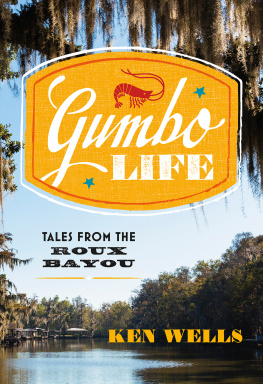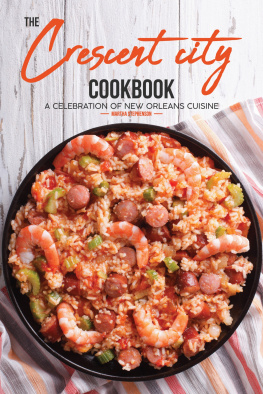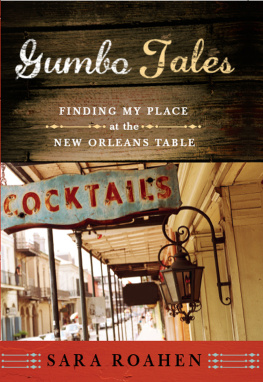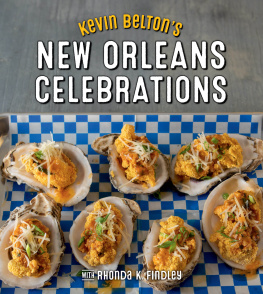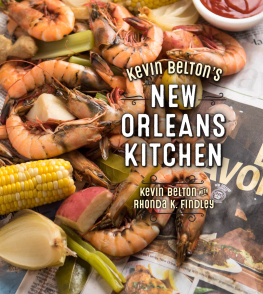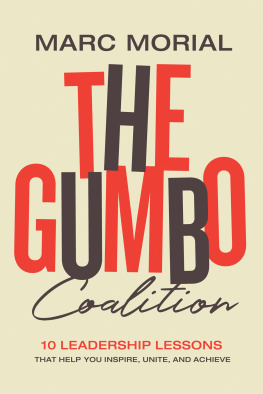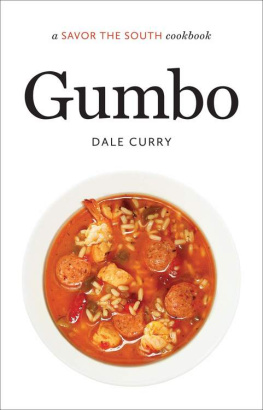

Copyright 2022
All rights reserved. No portion of this book may be reproduced by any means without permission in writing from the publisher.
The word Pelican and the depiction of a pelican are trademarks of Arcadia Publishing Company Inc. and are registered in the U.S. Patent and Trademark Office.
Text and Recipes: Richard Stewart
Foreword: Peggy Scott Laborde
Design: Michael Ledet Art & Design
Photography: Neil Greentree
Food and Photo Styling: Michael Ledet and Richard Stewart
Editing: Mimi Byrnes Pelton
Typography: Eugenie S. Delaney
Library of Congress Cataloging-in-Publication Data available
ISBN 9781455627219
Ebook 9781455627226
First Edition, 1999
First Pelican Printing, 2022
Printed in China
Published by Pelican Publishing
New Orleans, LA
www.pelicanpub.com
ACKNOWLEDGMENTS
Its amazing how many people it takes to produce a cookbook.
Thanks to:
Allain Bush of Bush Antiques, Eddie Dodge of Dodge Fjeld Antiques, Dindy Stewart, Fred Davis and Mary Stewart for china, flatware, tablecloths and other photographic props.
Cynthia Martin and Candace Cox for invaluable help and patience in testing recipes.
Guy Pellitteri for much assistance in writing the wine and cocktail sections.
Bill Roberts for his support throughout this project.
Baxter and Britton Stewart for their encouragement.
Susan LeBlanc and Vicki Lopez for holding my calls and Joan Levy for paying the bills.
Stan Melancon for hosting Neil, the photographer, and for lots of chauffeuring.
Eddie Finkelstein for watching my car.
All 67 Gumbo Shop employees for making this a possibility.
The 250,000 customers who each year eat some Gumbo Shop food.
Countless other friends, relatives, business associates, acquaintances, neighbors, strangers, and others who lent their valuable observations, critiques, words of support, advice and sometimes pointless, but humorous, comments along the way.
December 2, 1998
New Orleans, Louisiana
RICHARD STEWART, a native and life long resident of New Orleans is the President and Executive Chef of Gumbo Shop. He is a graduate of the University of New Orleans School of Hotel, Restaurant and Tourism Administration, a member of the American Culinary Federation, and serves as Vice President of French Quarter Festivals, Inc. He has taught courses in Louisiana Cooking, authored food and culture articles for several local publications, and this is his first cookbook.
PEGGY SCOTT LABORDE, also a native of the city, works as a producer for WYES, the New Orleans PBS affiliate, and is well known as a knowledgeable and reliable local cultural pundit. Among her many credentials are ten documentaries including Mardi Gras: The Passing Parade, New Orleans in the Sixties and A Holy New Orleans! Peggy is a founding board member of the Tennessee Williams/New Orleans Literary Festival. This is Peggys first contribution to a cookbook.
MICHAEL LEDET, another native and life long local resident is a professional artist, graphic designer and educator. He is on the faculty of Loyola University, and, as a graphic artist, specializes in arts and history publications for such clients as the New Orleans Arts Council and the prestigious Historic New Orleans Collection. Michaels drawings and paintings are collected and shown from coast to coast. This is his first cookbook.
NEIL GREENTREE is a native Australian who currently resides in Washington D. C. He is employed by the Smithsonian Institute where his duties include documenting Indian temples and other Asian art. His freelance works range from gourmet food catalogues to restaurant publicity shots. This is Neils first cookbook.
MIMI BYRNES PELTON is a native New Orleanian who left her home as a bride. She has taken her hospitality and food heritage with her wherever shes lived and has served gumbos, jambalaya and red beans to friends in Oregon, Texas, Illinois, Virginia and Rhode Island. After a career in educational publication, she is back home in New Orleans, writing, editing, and, especially, cooking.
EUGENIE S. DELANEY is a native New Orleanian who now lives in North Ferrisburgh, Vermont with her husband, Michael and daughter, Madeline. She has been designing and producing books for over 14 years.
CONTENTS
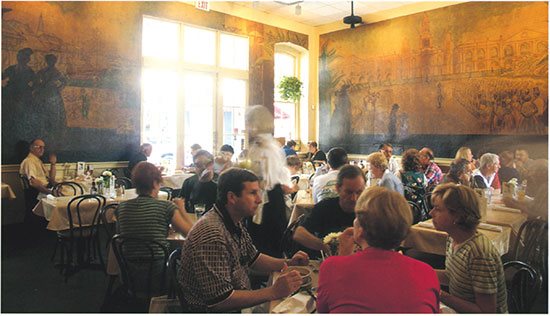
FOREWORD
I can resist everything but temptation.
OSCAR WILDE
New Orleans is a Mecca of culinary temptations and as a native I wouldnt want it any other way. Temptation and atonement are part of our culture. With religious roots that are primarily Catholic, thanks to our French founders, the church affects our calendar in a rather unique way: we celebrate Mardi Gras, or Fat Tuesday, the final day of feasting before 40 days of Lent. The traditional abstinence from meat during this time leading up to Easter means that we have to sacrifice by enjoying the bounty from nearby waters: fish, shrimp and oysters from the Gulf of Mexico, crabs from Lake Pontchartrain; and crawfish from area swamplands.
New Orleans was founded by the French in 1718 and named after the regent, the Duke DOrleans. Passed to the Spanish for a while, it went back to France long enough for Napoleon to sell it to a fledgling United States of America in 1803.
In New Orleans, the French influence over local cooking was just the beginning. Throughout the years African slaves were often the cooks. Through one of the nations busiest ports have come new citizens from Germany, Ireland, the French Caribbean Islands, Italy and Greece, Croatia and, more recently, Asia. The Choctaw Indians were already living in this swampy mosquito-infested piece of land, below sea level and shaped like a crescent on the Mississippi River. They introduced powdered sassafras or fil which they called kombo to settlers as a staple for one of many styles of the indigenous soup we call gumbo, from the African word kingumbo meaning the vegetable okra. A gumbo usually contains either fil or okra as a thickener. Just as gumbo is a blend of many cultures, so is the origin of the word. However, the base of most gumbos is roux flour and fat with seasonings that is browned to provide an almost nutty flavor.
Defining New Orleans cooking are the terms Creole and Cajun. A word whose meaning has been transformed over the years, Creole generally refers to anything native to New Orleans. Traditionally it described a person of French and Spanish roots born in the colonies. Recently it has come to also include African in that mix. When referring to food, it refers to more sophisticated city cooking typical of New Orleans.
Cajun describes cooking from Southwestern Louisiana the legacy of the Acadians, descendants of French Canadian communities in Nova Scotia and New Brunswick expelled by the British in the middle 1700s. Rich, hearty and often spicy are the characteristics of Cajun cooking. With other ethnic influences playing a part in both types of cooking, the lines separating these two culinary styles have become as fuzzy as the outer skin of the green spindly okra.
The Gumbo Shop is located in one of Americas most historic neighborhoods the Vieux Carre (French for old square), also known as the French Quarter. Open since the 1920s as a restaurant, according to veteran New Orleans architect Henry Krotzer, this Louisiana Colonial townhouse at 630 St. Peter Street is one of a handful of 18th Century buildings left in the Quarter. The structure was built in 1795 to replace a building that was destroyed in the devastating 1794 fire that started around the corner from the restaurant and almost wiped out the city. There was a commercial establishment downstairs and a residence above, typical of land use at that time. Among its more illustrious inhabitants was John Watkins, who was Mayor of New Orleans in the early 1800s. The ground floor of the 200 year-old building was once a woodworking shop.
Next page



